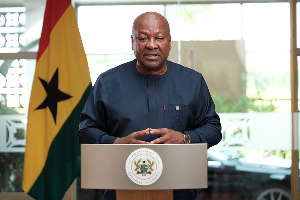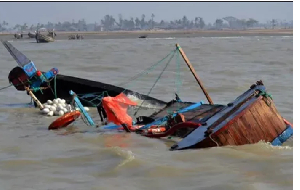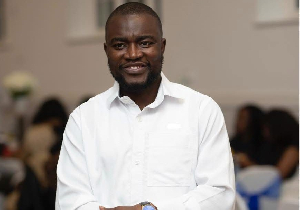“We know how to bring the economy back to life,” Ghana’s President Nana Akufo-Addo said in late March. “What we do not know is how to bring people back to life.” Six weeks later, that comment — which made international headlines — is serving as a reminder of early steps the West African state took in curbing the spread of the coronavirus, positioning Ghana as an unlikely success story.
At a time when wealthier countries like Singapore and South Korea are capturing global attention for their proactive stance in combating the pandemic, Ghana is emerging as a model for developing nations across Africa, Asia and Latin America that need smarter innovations to cope with fewer resources.
In mid-March, when Africa was relatively untouched by the virus, Ghana banned travel from any nation reporting more than 200 coronavirus cases. It rapidly ramped up testing, with more tests conducted as a fraction of its population than any other major African nation other than South Africa. In April, the government committed to buying 3.6 million locally produced masks, encouraging small businesses hit by the economic slowdown to instead manufacture personal protective equipment (PPE).
Ghana’s aviation authorities are employing American health care logistics startup Zipline’s aerial drones to ferry testing kits and samples between the country’s rural areas and the capital, Accra. And the last batch of international travellers, who entered Ghana in April before the country stopped incoming flights, were forced into quarantine in hotels near the airport, to ensure any asymptomatic carriers of the virus wouldn’t spread it to their friends and family.
The result? The country started the week with 4,700 confirmed cases but has a fatality rate of 0.7 percent per 1 million population. That’s the lowest among the 10 African nations with the most infections and a quarter of South Africa’s. It’s an exemplar that could offer valuable lessons to other nations, especially after Friday’s World Health Organization warning that Africa could see 190,000 deaths from COVID-19 by spring 2021.
Our path will be very different from some of the other countries. - Kojo Oppong Nkrumah, Ghana’s information minister
Central to the country’s strategy was testing at-risk populations “early,” when they were “very often asymptomatic,” says the country’s information minister, Kojo Oppong Nkrumah. “It’s easier to, therefore, assist them and get them out of the infection bracket so they recover early, so we don’t have pressure on hospitalization.”
That success now faces its sternest test, after Ghana relaxed some restrictions in major cities late in April. Since then, the country has witnessed a spike in cases compared to its earlier numbers. But its per-capita number of confirmed cases remains below that of South Africa, which has a similarly robust testing program.
Like most governments, Ghana’s didn’t react organically to the crisis, suggests Accra-based clinical psychologist Mohammed Salim Sulley Wangabi. It took criticism from the Ghana Medical Association for Akufo-Addo’s administration to install border restrictions and train emergency staff. But the government was then quick to scale up its efforts, setting up testing centers in Kumasi, Ghana’s second-largest city, even before it had recorded any cases, Wangabi says.
The country turned to pool testing to increase its coverage of vulnerable populations, says Nana Kofi Quakyi, a public health researcher at New York University. Under this method, samples of a larger group of people are merged and tested together. People are tested individually only if the pool test comes back positive, thereby conserving tests.
“But that works when it’s fairly rare that you’ll pick up a positive result,” Quakyi points put. Once the virus has spread significantly, and most pool samples start turning up positive, “you have to test all the samples again individually and this means more time spent so the efficiency benefit disappears,” he says.
Other challenges persist. Akufo-Addo’s ambitious plan to build a hospital in each of 88 local districts that currently don’t have one appears a pipe dream. Critics say it’s little more than posturing ahead of the country’s December elections, in which the president hopes to win a second term. “Long-term investments in health infrastructure are always welcome in a country where health care access is limited,” says Quakyi, who warns that the government should instead focus on the more immediate need to procure PPE and mitigate the economic effects of the pandemic.
“These facilities won’t be up and running in time to aid the present struggle. The priority should be lives and livelihoods over legacies.”
Still, Ghana appears to be building on its early gains, even while relaxing lockdowns. It’s enforcing distancing between passengers on public transit, and last week introduced a “no mask, no entry” policy at all public and government buildings and offices. Meanwhile, it is exempting health care workers from taxes for three months and has waived the value-added tax on donations of equipment and items needed to tackle the pandemic.
Ghana’s army is building a 100-bed facility in partnership with private firms in an Accra stadium. Another 100-bed empty hospital commissioned by the president before the crisis is now being used to treat patients.
Not everyone is convinced Ghana can stay the course and avoid becoming overwhelmed. But Nkrumah is confident the country can keep its infection rate — the fraction of those tested who are SARS CoV-2 positive — below 3 percent.
“If people abide by the personal preventive etiquette, then economic activity can resume while the population is protected,” he says. “our path will be very different from some of the other countries.” The rest of the world — and especially fellow developing nations — will be watching.
Opinions of Wednesday, 13 May 2020
Columnist: Eromo Egbejule















